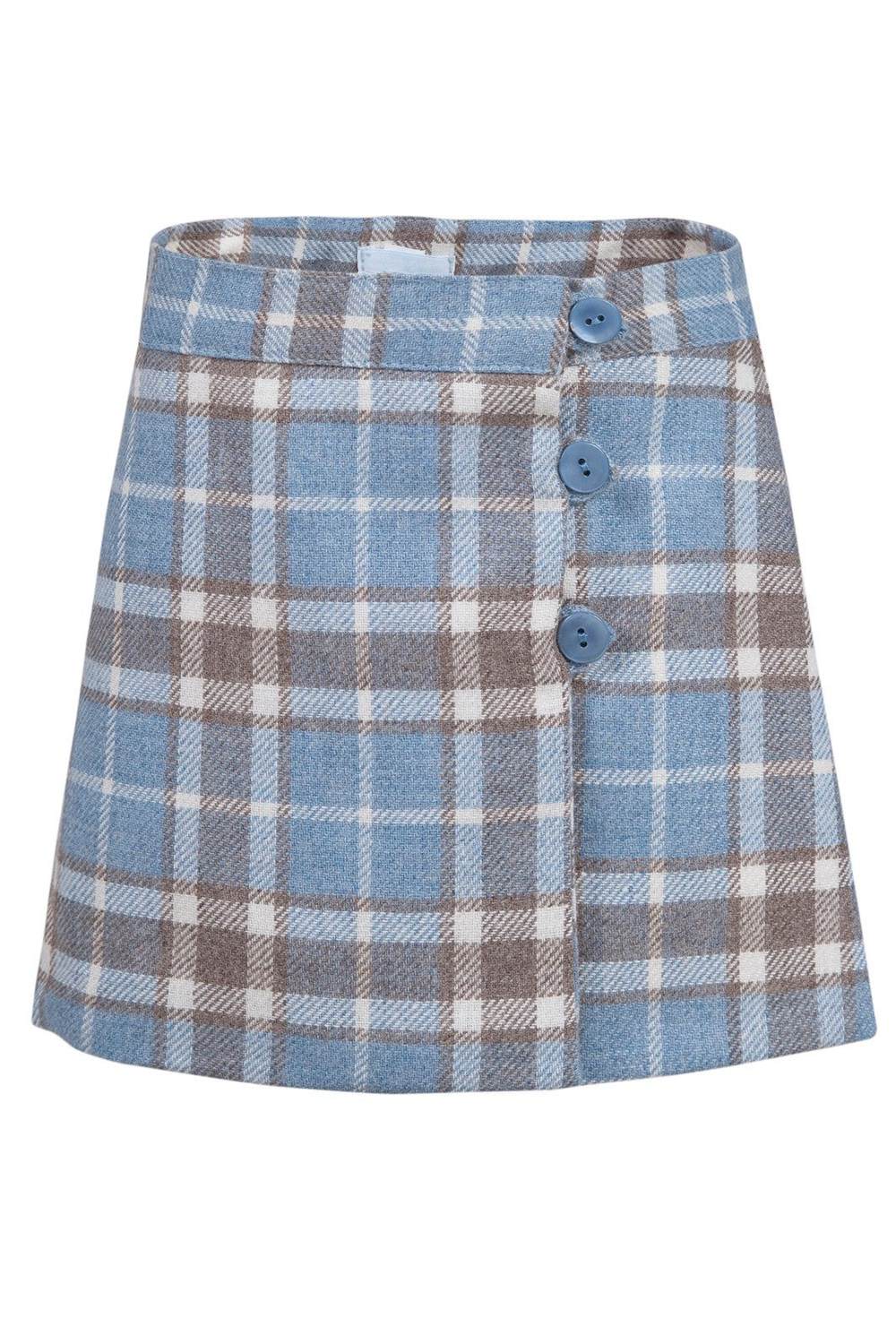
Making a too-tight skirt fit properly again can seem daunting, but there are several easy methods to make a skirt bigger with minimal sewing skills required. Whether the skirt no longer fits due to weight fluctuations or it has simply shrunk from washing, enlarging a skirt is an attainable task for sewists of all levels.
With some strategic cutting, stitching, and inserting elastic or fabric panels, you can comfortably adjust a snug skirt to be wearable once again. This comprehensive guide will walk through various techniques to make a skirt bigger in the waistband, hips, and length. Follow these steps below to learn how to let out a skirt seamlessly.
Table of Contents
Steps To Make A Skirt Bigger

1. Identify Problem Areas
Before making alterations, examine the skirt while wearing it to identify specific tight areas in need of enlargement. Mark down problem spots with pins, chalk, or fabric marker. Typical areas that may need extra room include:
- Waistband – If the waistband feels very snug, focus on letting out this area first. Pinpoint where the waistband feels too tight and mark that section.
- Hips – Curvy figures often require more width through the hip area. Look for strained seams and pin along the seam on both sides to note where fabric is being pulled too tight.
- Side seams – Adjusting the side leg seams is an easy way to add overall width. Mark areas along the side seams where you feel restricted.
- Length – A skirt suddenly becoming too short is a common issue to remedy. Mark the current hemline and note how much length you need to add for ideal coverage.
Once you’ve marked the particular spots that need attention, move onto the next steps.
2. Select Expansion Method
There are several techniques to make a skirt bigger, depending on your sewing skills and the garment’s original construction. Consider the following options:
For the Waistband:
- Add elastic – Inserting elastic is the easiest way to expand a waistband. This works well for minor adjustments of 1-2 inches.
- Open seam – Open the waistband seam to insert a fabric panel. Good for uniform expansion when you need to let out the waistband evenly all the way around.
- Release pleats – Let out any existing pleats in the waistband. This gives you built-in extra fabric to expand the waist width.
- Extend waistband – Unpick the waistband stitches and add fabric to make the entire waistband larger before re-stitching.
For Hips and Side Seams:
- Open seam – Carefully open and re-stitch side seams for even width addition. This is great for overall adjustment.
- Insert fabric panels – Strategically add mesh or solid fabric triangular gussets. Target specific curve-hugging areas.
- Add ruching – Ruching gathers fabric for adjustable, non-permanent expansion. Use this for flexible shaping.
To Lengthen Skirt:
- Open hem – The simplest option to make a skirt longer by an inch or two.
- Add trim – Sew on wide lace, ruffles or other trim. Boosts length while enhancing style.
- Insert fabric panel – For adding several inches or more, insert a fabric strip at the hem.
Pick the method(s) suitable for the problem areas you identified. Combining a couple techniques may be necessary for full adjustments.
3. Add Elastic to Waistband
Adding elastic is the easiest way to gain 2-3 inches in the waistband. Here are two methods:
Method 1:
- Measure your natural waistline where the skirt currently fits. Cut a length of 1/4″ or 1/2″ elastic slightly smaller than this length.
- With zipper open, safety pin one end of elastic to the seam allowance inside waistband. Overlap other end about 1/2 inch.
- Stitch over this overlap several times to secure the elastic ends together. Remove safety pin. The elastic should fit snugly but allow for stretch.
- Try on the skirt to test the fit. The waistband should now stretch over your hips comfortably while retaining a clean finish.
Method 2:
- Detach waistband lining from outer waistband. Cut elastic to same length as waistband interior.
- Sandwich elastic between outer and inner waistband with edges aligned. Pin in place.
- Re-stitch the waistband with the elastic inside, stretching the elastic slightly as you sew.
- Stitch around the waistband a second time for added reinforcement. The elastic will now provide flexibilty.
4. Let Out Side Seams
Releasing side seams is an easy, effective approach for adding overall width to a skirt. Here’s how:
- Identify the current stitching line on each side seam. Use chalk or fabric marker to mark the original seam line.
- Use a seam ripper to carefully remove stitches, separating the seam allowances. Press them open.
- Put skirt on body form or person and pin/clip excess seam allowance to fit desired width. Mark new stitch line.
- Machine stitch precisely along the marked expanded line on both side seams.
- Serge or zigzag raw seam edges so they don’t fray.
- Try on skirt to ensure comfortable fit. Make any additional adjustments needed.
Adjusting the side seams should help the hips and waist areas fit better as you’ve added overall circumference.
5. Insert Triangular Gussets
For targeted hip/curve enhancement, triangular fabric gussets add focused expansion.
- Cut a triangle test piece from mesh fabric or excess skirt material. Adjust until it’s 3-5 inches long.
- Open side seam near hip area; pin triangle point facing down. Align the top edge with the seam.
- Hand or machine stitch along triangle’s edges to integrate it into the seam.
- Clip seam allowances and press toward back to reduce bulk.
- Topstitch along the seam for a clean finish.
Insert gussets on both side seams for balanced widening. Add multiple triangles if needed.
6. Add Ruching at Side Seams
Ruching gathers fabric to create adjustable width. Here’s how:
- Cut a rectangular strip of flexible fabric, about 2-3 inches wide x 16 inches long.
- Pin the strip’s long edge to the dress side seam, centering it over the hip curve.
- Sew strip to seam, stitching precisely on the existing seam line.
- Make parallel rows of stitching every 1/4 inch across the entire rectangle.
- Pull the thread tails at one end to ruche up the fabric until desired fullness is reached.
- Knot threads securely and trim. Check both sides of skirt for even ruching.
Repeat ruching on both side seams. The gathers provide customizable slimming and expansion.
7. Let Out Skirt Hem
To make a skirt longer by a couple inches, simply letting out the existing hem is the easiest method.
- Identify hem stitching line. Carefully remove stitches to free hem allowance.
- Press hem allowance to remove old stitch marks. Measure to ensure you have enough fabric to extend.
- Mark and pin new hemline evenly around skirt bottom. Allow 1/4″ extra to account for seam.
- Refold, iron and hand or machine stitch the new lower hem seam.
8. Insert Fabric Panel to Lengthen
Adding a fabric panel is an effective approach for adding significant length to a skirt, anywhere from 2-5 inches.
- Determine how much length you want to add. Cut a fabric strip that wide x skirt width.
- Open skirt hem seam. Align strip’s raw edge with hem raw edge, right sides together.
- Pin and stitch strip to released hem edge using 1/2″ seam allowance.
- Press seam up into skirt. Fold under raw edge 1/4″ and stitch new hem.
The panel width blends seamlessly into the skirt while proportionally extending the length. For extra swing or fullness, use soft knit material for the insert.
Helpful Tips and Tricks
- Mark all seam stitching lines before taking anything apart so you can align it later. Use chalk, pins or erasable marker.
- Press as you go to keep seams flat and fabric smooth for easier handling. Be careful not to singe fabric.
- Remove old stitches slowly to avoid accidentally cutting surrounding fabric.
- Try on the garment frequently while adjusting to ensure proper evolving fit.
- Knit fabric inserts integrate well while adding comfortable stretch and movement.
- Taper inserted panels or gussets for a subtle, blended transition into the skirt fabric.
- Add bar tacks at ends of darts or seam intersections for durability.
- Make symmetrical changes on both sides for balanced proportions.
- Secure threads neatly by weaving ends into seam allowances rather than cutting them.
Common Questions About Making a Skirt Bigger
Q: What if my skirt has darts instead of side seams?
A: Releasing darts is possible but trickier than side seams. Try adding ruching or panels first. Or consider inserting new side seams.
Q: Can I just cut slits in the sides and add fabric?
A: Simply cutting and inserting fabric panels often distorts the hang and proportions. Opening seams is less invasive and maintains the original drape.
Q: How much width can I add without throwing off the look?
A: It depends on the design, but around 2 inches per side is usually a safe maximum for subtle enhancement. Anything more may require multiple panels.
Q: Will making a skirt bigger affect the shape or hang significantly?
A: If done carefully and gradually, it should not distort the overall look too much. But there are limits, especially for intricate designs.
Q: Is it better to alter the skirt itself or add shapewear/belt?
A: Altering the garment will give you full comfortable range of motion without restriction. But shapewear can be a quick temporary fix in a pinch.
Q: Can I add length without sacrificing the original hem?
A: Yes, by opening the hem, extending it and re-hemming rather than cutting it off, you can preserve any original edging or detail.
Q: What’s the maximum length I can add to a skirt?
A: For a seamless look, you can generally add 4-6 inches safely by inserting fabric panels. Beyond that may alter proportions.
Conclusion
Adjusting a too-tight skirt is very doable with some simple tricks: let out seams, add elastic or panels, insert gussets, release pleats, incorporate ruching or extend the hem. Focus on problem spots individually. With some strategic cutting and stitching, you can successfully make a skirt bigger and wearable once again.
Just take it slow and make incremental changes for best results. Follow the techniques here while utilizing stretch materials to maintain the garment’s proportions and functionality. Soon you’ll be able to comfortably wear your favorite snug skirt again.